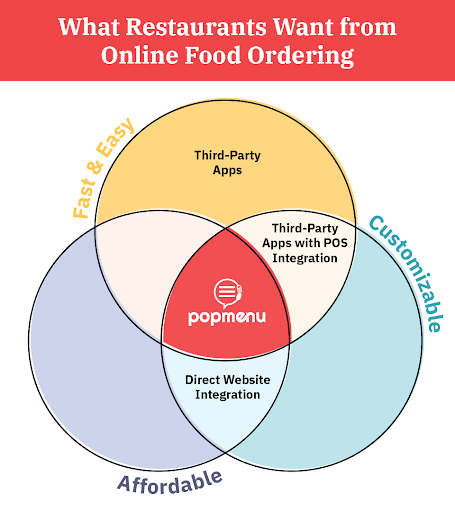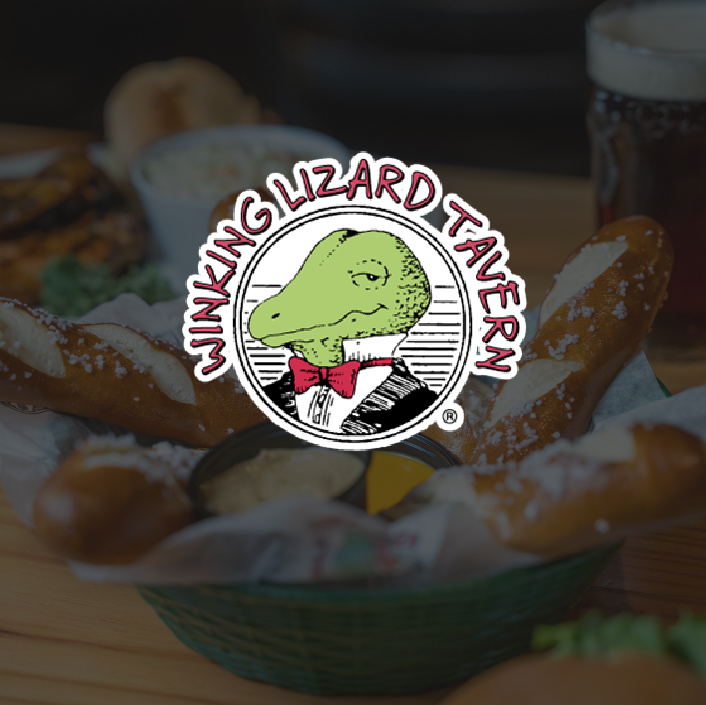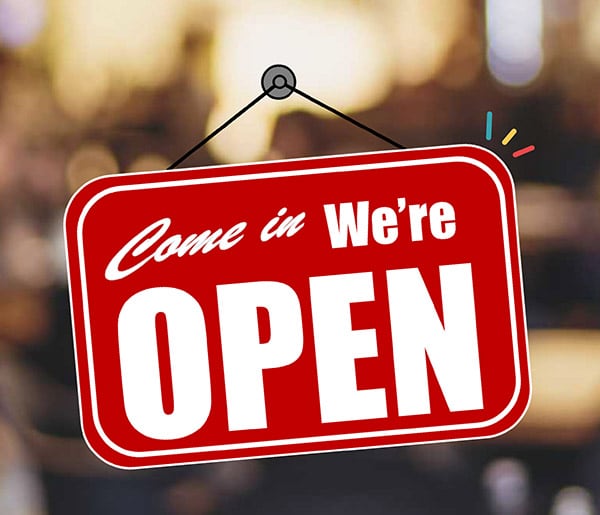
How to set up online food ordering in an afternoon

During the COVID-19 pandemic, many restaurants were forced to close their dining rooms and pivot to delivery, takeout, and curbside pickups. Restaurant guests adjusted to those changes. In 2020, 51 percent of consumers have downloaded a new food delivery app.
While the pandemic certainly accelerated the increase in popularity of online ordering and food delivery, this is a trend that’s long been growing. All the way back in 2016 (we know, it feels like ages ago), 60 percent of U.S. consumers were ordering delivery or takeout at least once a week.
Online food ordering and delivery are here to stay. But does that mean restaurants are getting the most benefit possible from online orders? Not always.
The most popular options out there for setting up online food ordering and delivery all have pretty major drawbacks that are costing restaurants time, effort, and, most importantly, money.
Meanwhile, busy restaurant owners and managers just want a fast, easy, and convenient way to set up online food ordering while protecting their margins.
Is there a better way? We think so. Read on to learn more.
Why Restaurants Need Online Food Ordering
There’s a simple reason restaurants need to offer online food ordering (that we’ve already touched on above): It’s what their guests want.
In order to stay modern and competitive, offering guests different ways to enjoy their favorite restaurants is becoming more and more necessary.
But there are other benefits, too.
Online Ordering Can Help You Boost Profits
When you only serve guests in your dining room, you’re limited by the number of tables you can seat in a day or service. That’s not the case with online food orders.
Letting guests place orders online for takeaway or delivery allows you to serve more guests each day, which means more checks and bigger profits. Plus, there’s evidence that guests order more items when they get takeout or delivery, which can boost your bottom line even further.
Online Ordering Can Help You Reach New Guests
Maybe your restaurant is in a neighborhood a customer never visits in person, but they see your menu in an online search and decide to place a delivery order. Offering guests more ways to order from your restaurant inevitably means you’re opening up your restaurant to new guests you might not have reached otherwise.
Online Ordering Creates a Great Guest Experience
In the restaurant industry, we know how important it is to give our guests great experiences. Online ordering supports that in a number of ways.
First, there’s the convenience for guests. Being able to order food from their favorite restaurants at any time—and from any device—is incredibly convenient—and might even encourage guests to place more frequent orders.
But allowing guests to place their own orders online also makes orders more accurate. There’s no more, “I’m sorry—can you repeat that?” over the din of a crowded dining room. No more listing off salad dressings or customizations and hoping the guest remembers them all. Guests can specify exactly what they want, and then it’s given, in writing, to the kitchen.
It’s clear that offering online ordering can benefit just about any restaurant. But before you jump in and implement an online ordering system, you need to prepare your restaurant and staff.
How to Prepare Your Restaurant for Online Food Ordering
There are a few steps to take to ensure that your restaurant’s online ordering system will be successful.
Optimize Your Menu for Online Ordering
Not all food items on your menu are going to travel well. Before you start offering delivery, examine your menu carefully and think about this—how can you package foods so they’ll stay at the correct temperature and not leak or spill en route to a guest?
You may be able to offer your entire dine-in menu for delivery, or you may need to remove menu items that won’t stand up to being transported. Think about things like fried foods (they get soggy on the road) or eggs (they tend to overcook when put in to-go containers). Consider leaving certain items off your online menu if you can’t maintain their quality.
Prepare Your Staff for Online Ordering
Adding online orders to your restaurant’s workflow will require some changes for your staff. Take the time to make sure everyone is prepared, and that both front- and back-of-house staff understand any new processes or technology you’re implementing.
It might help to do a few trial runs, especially if you’re offering dine-in, takeout, and delivery all at the same time. Many restaurants create a separate prep area for to-go orders, so consider that as well, if your kitchen has the space.
Market Your New Online Food Ordering Options
No one will order food online from your restaurant if they don’t know they have the option, so it’s time to start spreading the word. Use your existing website and social media, like your Facebook page, to announce that you’re offering online orders. If your restaurant has a newsletter, include information about how to order online. Offer dine-in guests a promotion for their first online order. And, most importantly, make sure your restaurant website is search engine optimized (SEO) so guests can find it when they search for places to eat online.
The next step? How to create an online food ordering system that world for your restaurant. Let’s look at some of the most popular options.
How to Set Up Online Food Ordering: 3 Top Options
Restaurant owners, managers, and marketers have a sea of options when it comes to setting up online food ordering and delivery service. However, there are definitely platforms and solutions that are most popular with both restaurants and their guests.

Direct Website Integration
The most straightforward way to offer online food ordering is directly through your existing website. Many website builders—like Wix, Squarespace, and Weebly—offer pre-built templates, as well as restaurant ordering and e-commerce modules you can use. If your site is on Wordpress, there are a number of available plugins for online ordering.
The biggest upside to this kind of restaurant online ordering system is that it allows you to control everything: Delivery options, delivery zones, delivery fees, what kinds of payment options you accept, and more.
The downside is that it’s complex and expensive to build a bespoke online ordering platform or mobile app, so you’ll likely be limited by the options and plugins that exist for the provider you use for your existing website.
Pros of Direct Website Integration
- Customers order straight from you, so you get to keep all profits.
- You have total control over the entire process, from menu creation to payment to delivery.
Cons of Direct Website Integration
- You have to manage every aspect of the process.
- Some technical know-how is required to set up and manage online ordering on your own website.
- Depending on what your web builder offers, you may be limited by existing modules and plugins. You may also need to upgrade to a higher website plan tier to access online ordering features, or migrate to a new website builder to get exactly what you want.
Third-Party Delivery Apps
Third-party apps (UberEats, Grubhub, Doordash, Chownow, and others) provide restaurants with a convenient and efficient way to start offering online food ordering and delivery to their customers. These kinds of ordering apps are extremely popular with users.
Pros of Third-Party Delivery Apps
- Your restaurant receives greater exposure via a large pool of app users.
- Setting up a third-party app for online ordering is fast, convenient, and easy.
Cons of Third-Party Delivery Apps
- Depending on which app you use and your POS system, you might need to manually process online orders from the app, which opens you up to errors.
- You have less control over the appearance of your menu and other online branding.
- You miss out on valuable data about your customers that could help you hone your marketing strategy.
- Fees. Third-party apps will often charge you a platform fee to get started, plus commission on orders. They might also come with hidden fees and extra service charges for your customers, which can alienate them.
Third-Party Apps with POS Integration
A third popular option still uses the convenience and ease of third-party apps, but alongside a POS integration that allows orders from the apps to be directly received by your POS. Cake, Checkmate, Revel, and Toast are popular tools that can do this job.
Pros of Third-Party Apps with POS Integration
- The process is streamlined even further, with no manual input that leaves you open to order errors.
Cons of Third-Party Apps with POS Integration
- Another tool can often mean another fee — on top of the fees and commissions you already have to pay for third-party delivery apps.
Why Is Online Ordering So Complex (and Expensive)?
There are three main things restaurants want from their online food ordering setup.

But many of the most popular online ordering options only give you one or two of them.
Direct web integration is affordable and customizable, but not fast, convenient, or simple.
Third-party apps are very fast, convenient, and simple, but you have to give up a lot of control — plus there are all the fees and commissions.
POS integration with a third-party app gives you more convenience and control, but it’s even more expensive.
Restaurants need an online food ordering option that offers them all three. They need Popmenu.
Online Ordering Pain Points? Popmenu Solves them All
Popmenu is a restaurant digital marketing solution that helps independent restaurants improve their entire online presence — and that includes online food ordering.
With Popmenu, guests order through a shopping cart-like experience directly from your website. Their orders are sent straight to you for confirmation, with payment processing by Stripe or Square. Then, you can deliver orders with an in-house team, or partner with a local delivery network.
Here are the most important things:
- Popmenu gives restaurants complete control over the entire online ordering process (including customer data, which they can use to remarket to customers later).
- Popmenu charges a straightforward, flat fee with no percentage commissions. In fact, we’ve saved independent restaurants over $1.2 million in online ordering commissions and fees--and we’re not done yet!
- Best of all, it’s simple and convenient, and you can set up online food ordering for your restaurant via Popmenu in just minutes.
How to Set Up Online Ordering with Popmenu
Online ordering and delivery are included with every Popmenu account.
Our onboarding team will help you prepare your menu for online ordering. You choose whether to collect payment through Stripe or Square, and whether you’ll deliver orders with an in-house team, or utilize our partnership with DoorDash for convenient delivery.
Then, just sit back and wait for your first online order. When it comes in, you’ll receive an email, a text notification, and/or a push notification via the Popmenu for Owners app. If your MyPop dashboard is open, it will notify you with a chime. All that’s left is for you to accept the order — and cook up a delicious meal for your online customer, of course.
Ready to Set Up Online Food Ordering?
If you start now, you could have online ordering set up by your next dinner rush.
Schedule a Popmenu demo today.





.jpeg)






